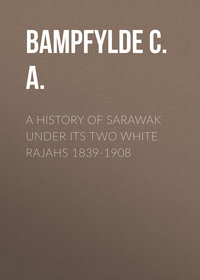 полная версия
полная версияThe Lives of the Saints, Volume III (of 16): March
[Roman Martyrology. His festival was ordered by pope Sixtus IV. to be observed as a double; Gregory XV. recommended its general observance by the faithful, and this recommendation was confirmed by Urban XIII., by bull in 1642.]
All we know for certain concerning S. Joseph, the husband of Mary the mother of God, is derived from the Holy Gospels. To him was confided the most precious treasure ever entrusted to man, the guardianship of Mary and Jesus, of the Mother and the Son of God; whence we may infer the great sanctity and merit of S. Joseph.
He was of the lineage of David, and therefore of royal race, but was poor, and gained his livelihood as a carpenter. According to S. Matthew his father's name was Jacob, according to S. Luke it was Heli, this discrepancy in the accounts is explained by the supposition that one of the genealogies represents the direct line of natural generation, the other the legal descent of royal prerogative. We are expressly told that he was a just man. On perceiving that his virgin wife was with child, he resolved secretly to put her away, for having lived with her in the purest relations, he knew that the child could be none of his; and by secretly divorcing her, he would spare her the scandal which would attach itself to her, for the world would regard her offspring as his son, and he alone would know that this was not the case.
But he was warned by God in a dream to believe in the innocence of his wife, and was told that she was to become the mother of the Son of God. Afterwards, when Herod sought the life of the young child, he took Him and His mother by night and fled with them into Egypt, till hearing that Herod was dead, in obedience to an angelic order, he returned to Palestine; but finding that Archelaus the son of Herod was reigning in Judea, he thought it imprudent to enter his dominions, and therefore settled at Nazareth. He and Mary went once every year to Jerusalem to offer their sacrifice in the temple, in obedience to the requirements of the law, and on one of these occasions Jesus accompanied them. The child Jesus grew up under the care of Joseph, assisting him in his shop. It is believed that Joseph died before our Lord began his ministry; for we hear of him no more.
The girdle of S. Joseph is said to be preserved among the sacred treasures of the church of Joinville, in the diocese of Langres.
S. PANCHARIUS, M(3RD CENT.)[Roman Martyrology and Greek Menæa. Authority: – The account in the Menæa.]
Pancharius, a young Christian, well-favoured, and active, having gained the favour of the emperor Maximian, became his secretary. His mother and sister, hearing this, were filled with anxiety lest his soul should be imperilled. They therefore wrote to him a letter urging him not to be ashamed of Christ, and to remember that it profits a man little to gain the whole world if he lose his own soul. On reading this letter, Pancharius was moved, and lifting up his voice he prayed to God, "Have mercy upon me, Almighty God, and bring not thy servant to confusion in the face of men and angels, but according to thy great mercy, spare me." Some one overheard this prayer, and told the emperor that his favourite was a Nazarene. The emperor sent for him and asked him if this were true. Then the young man confessed that he was. The emperor urged him to renounce his religion. But as Pancharius refused, he ordered him to be scourged, and sent to Nicomedia to be tried and sentenced by the governor. At Nicomedia he was subjected to fresh interrogation, but maintaining his constancy, was condemned to execution by the sword.
S. JOHN, AB. AT CIVITA-DI-PENNE(4TH CENT.)[Usuardus, Ado, Notker, some copies of Bede's Martyrology, and the Roman Martyrology. Authority: – An ancient life published by the Bollandists, but evidently founded on tradition.]
The life of this saint shall be translated from the original, as it deserves, from its quaint simplicity and freshness.
"It fell out in those days that as the blessed John was going forth from Syria, he prayed, saying, 'Lord God of heaven and earth, God of Abraham, Isaac, Jacob, and of our Fathers, who madest heaven and earth with all their adornments, who by a word didst suspend the sea, who didst close the abyss and sign above it gloriously, whose mighty name all things revere, and before the face of whose virtue all things quake; I pray Thee, who art the true light, illumine me hoping in thee, and make my way prosperous before me, in which I go, and let this be to me for a sign that there I should rest, when that person to whom I give my psalter shall not return it to me the self-same day.'
"And it came to pass that he came to Italy, and was near to the metropolitan city (of Spoleto) and had gone about five miles into the Angellan farm, when he met with a certain handmaiden of God, and he gave to her his psalter. And afterwards he asked the handmaid for it again, and she said, 'Servant of God, whither goest thou? Tarry here, and go thy way to-morrow.' And when they had long spoken, she insisted that he should remain there that night; so he remained. And the blessed John remembered his prayer that he had made, and he said in his heart, 'Verily this is what I besought of the Lord; here will I dwell.'
"So when the morning came, having received his psalter again, he went forth no more than four bow-shots. And, behold! an angel of God appeared to him, and went before him, and when they came to the place, the angel said to him, 'Sit down here, servant of the most high God, for the Lord hath commanded thee to dwell here,' and so saying, he led him under a tree and said, 'Here shalt thou have a great congregation, and find rest.' Then S. John, the Confessor of Christ, sat down under the tree.
"Now it was the month of December, and according to the custom of the month, it froze hard, and all the ground was stiff; but the tree under which the blessed John reposed, blossomed as the lily. And at that time hunters went by, and they found him sitting under the tree, and they thought that he was a spy, and they questioned him, saying, 'Whence comest thou?' Then the blessed John told them all, and how he had come to Italy. So they marvelled greatly, for they had never seen a habit like his. But he said to them, 'Do not, my sons, do not harm me, for I have come here in the service of Jesus Christ.'
"Then they observing the tree, that it shone as a lily, knew that the Lord was with him, and they told all things to the bishop of Spoleto. And when bishop John heard this, he was filled with great joy, and he hasted, and went to where the blessed John was praying. And when they saw one another, for joy they wept. And all that were present gave glory to God. Now through the mercy of God many people were collected there, and he built a monastery, and he lived therein all the rest of the days of his life. And he was there forty and four years, and he fell asleep in peace, and was buried with hymns and songs, where he reposes to this day, and there the blind receive their sight, devils are expelled, lepers are cleansed, and the divine offices are there performed to the present day, through the assistance of Jesus Christ, our Lord, who liveth and reigneth, through ages. Amen."
S. LACTEAN, AB. OF CLON-FERT(A.D. 622.)[Irish Martyrologies. Authority: – A fragmentary life published by the Bollandists, based on tradition.]
The legend of this saint comes under the same category as so many of the other Irish legends. It exists only in fragments, and was written several hundreds of years after the death of S. Lactean, from oral tradition. It shall be given without any attempt at sifting truth from fable, as a specimen of these Irish biographies.
An angel appeared to S. Molua (d. about 608), monk of Banchor, in Ireland, when he was wondering who would become his pupil, and announced to him that after the lapse of fifteen years a child would be born, who would become his disciple. And for those fifteen years Molua did not laugh, being instant in expectation. Now there was a man in Munster named Torphur, who had a wife named Senecha, and she was with child. And before the child was born, her breasts filled with milk. An old man, named Mohemath, passed by, and he was blind. Then Senecha struck his eyes with her milk, and his eyes opened, and he saw so plain that the city of Rome, bathed in clear light, was visible instantly to his so long darkened orbs.
Now when Lactean was born, Mohemath was near at hand. And the place was without water. So Mohemath took the finger of the new-born babe, and with it signed a cross on the earth. Then instantly a fountain burst forth, and therein Lactean was baptized. And when Lactean was a month old, he was taken to S. Alpheus, to be rebaptized, but when he saw the child full of the grace of God, he knew that he had already been bathed in the laver of regeneration, and, therefore, he refused to repeat the sacrament. Also there was in that country a grain, which acted on whomsoever ate thereof as an emetic, but the infant Lactean was fed thereon, and was none the worse, for indeed nothing injured him. Now a grievous murrain broke out amongst the cattle of his father, and they died. But there was a white cow with a red face, on whose milk Lactean was nourished, and this cow died. Then the child was carried in his mother's arms to the dead cow, and it recovered, and her milk was distributed amongst the other cows, and they recovered of their disorder.
Now when Lactean was aged fifteen, the angel Muriel, who was commissioned to be his guardian, led him to Banchor, and S. Comgal gave him to be the pupil and companion of S. Molua, who instructed him in letters and the reading of the Divine Scriptures.
Afterwards Lactean went to S. Mochuda, and as he drew nigh, he sent and asked Mochuda for milk. Then Mochuda filled a vessel with pure water, and signed it, and it became milk, but Lactean took it, and signed it again, and it was reconverted into water. Afterwards Lactean founded the abbey of Clonfert, and he died in the odour of sanctity.
It is evident that his name was the occasion of so many milky legends attaching themselves to it.66
Colgan has confounded this S. Lactean with another of the same name, a contemporary of S. Senan of Iniscatthy, from whom the church of Lis-lachtin, in Kerry, took its name, and who died about the year 560. The S. Lactean of Clonfert belonged to the house of Corpre Muse, of Muskerry, Cork, and was a friend of S. Mochoemog (Pulcherius), abbot of Achadur (Aghour), in Kilkenny.
SS. LANDOALD, P., AMANTIUS, D., AND ADRIAN, M(8TH CENT.)[Belgian Martyrologies. S. Landoald is venerated especially at Ghent. Also Roman and Gallican Martyrologies. The translation of S. Landoald is commemorated on Dec. 1st, and the elevation on June 13th. The original Acts were lost in 954, and by order of Notker, B. of Liege, new ones were compiled in 981, by one Herdger, abbot of Lobie, who died 1007.]
S. Amandus having resigned the see of Maestricht into the hands of S. Remacle, to resume his first vocation of mission work in the Low Countries, went to Rome to obtain the approval of his design by pope Martin. The pope not only approved of it, but gave him Landoald, a priest of the Roman Church, of Lombard family, to accompany and assist him in his work. S. Amandus was also joined by the deacon Amantius. They left Rome, and after visiting some of the monasteries of France, arrived in the country between the Meuse and the Scheldt, where S. Remacle met S. Amandus, and persuaded him to allow him to keep Landoald with him to assist him in the work of evangelising his diocese. Landoald had a large field for the exercise of his zeal in the diocese of Maestricht, only partially converted to the faith. A rich man named Aper gave him a piece of land at Wintershoven, on the river Herck, to the west of Maestricht, where he built a church, which he dedicated to S. Peter, in 659. Landoald continued his labours under S. Theodard, the successor of S. Remacle, making Wintershoven his head-quarters, and sending from time to time one of his little community to Maestricht to beg. One of his disciples, Adrian by name, was returning from his quest of alms, when he was waylaid by some robbers, and murdered. S. Landoald did not long survive him, and there is reason to believe that he died before S. Lambert succeeded, in the see of Maestricht, to S. Theodard, who was martyred in 668. He was buried in the church of Wintershoven, but his body was taken up in 735, and transported into Maestricht, but from fear of the Normans it was concealed, and taken up again along with the bodies of S. Amantius and S. Adrian, by Euraculus, bishop of Liége, but they were claimed by the monks of S. Bavo, at Ghent, who were proprietors of Wintershoven, and the bodies were translated to Ghent in 980.
S. ALKMUND, M(A.D. 800.)[Anglican Martyrologies. Authorities: – Florence of Worcester, William of Malmesbury, Simeon of Durham, and Thurgot of Durham.]
A great discrepancy exists in the accounts given of this saint. Malmesbury is certainly not to be trusted in his relation, and we must follow the account of Simeon of Durham. Ceolwulf, king of Northumbria, abdicated in 737, and was succeeded by Egbert, who was succeeded in 758 by his brother Osulf, who was killed in 759, leaving a son, named Ethelwald. He was succeeded, not by his son Ethelwald, but by another Ethelwald, surnamed Moll, who was banished in 765, when Alcred, son of Eanwin, a descendant of Ida, came to the throne. He was banished in 774, and the crown rested on the head of Ethelred, son of Ethelwald Moll, who was banished in 779, and succeeded by Ethelwald, son of Osulf. But this Ethelwald was killed in 788, whereupon Osred, son of Alcred, came to the throne. Osred's younger brother was S. Alkmund, the subject of this memoir. But Osred was deposed, in 790, by Ethelred, son of Ethelwald Moll, who had been exiled in 779, and this king put Osred to death in 792; and Alkmund, in 800, was murdered by order of king Eardulf, who came to the throne in 797, after the assassination of Ethelred in 796.
Alkmund had spent some years in banishment among the Picts, and was loved and revered for his spotless innocence and gentleness in a period of crime and violence. Harpsfield, following Radulph Diceto, says Alkmund fell in battle against the West Saxons, which is certainly wrong. He also makes Alkmund the son of Ethelred, which is also a mistake; and Malmesbury calls his father Alfred. The name probably was Alcfred.
S. Alkmund was buried at Lilleshut, in Shropshire, but his body was afterwards translated to Derby, and he is honoured as the patron of that town.
March 20
S. Joachim, Father of the B. Virgin Mary.
SS. Photina, Joseph, Victor, and Companions, MM., 1st cent.
S. Archippus, Companion of S. Paul, 1st cent.
SS. Paul, Cyril, and Companions, MM. in Syria.
SS. Alexandra, Claudia, and Others, MM. at Amisa, 4th cent.
S. Urbicius, B. of Metz, circ. A.D. 420.
S. Martin, Archb. of Braga, in Portugal, A.D. 580.
S. Cuthbert, B. of Lindisfarne, A.D. 687.
S. Herbert, P.H. in an island of Derwentwater, A.D. 687.
S. Wulfram, B. of Sens, A.D. 741.
SS. John, Sergius, Cosmas, and Companions, Monks MM. in the Laura of S. Sabas, near Jerusalem, A.D. 797.
S. Nicetas, B.M. at Apollonia, 8th cent.
B. Ambrose, O.P. at Sienna, A.D. 1287.
B. Hippolytus Galantini, Founder of the Institute of Christian Brothers, at Florence, A.D. 1619.
S. JOACHIM[Roman Martyrology; by the Greeks on Sept. 9th. The insertion of this name in the Martyrologies is not earlier than the 16th century. The Roman Breviary of 1522, pub. at Venice, contained it with special office, but this was expunged by pope Pius V., and in the Breviary of 1572, neither name nor office are to be found.]
Nothing whatever is known of S. Joachim, except what is related in the Apocryphal Gospels, whence the name is derived. It is probable, however, that the name was traditionally preserved, and adopted by the author of the Apocryphal Gospels.
S. CUTHBERT, B. OF LINDISFARNE(A.D. 687.)[Martyrologies of Bede, Usuardus, Ado, Rabanus Maurus; the Anglican, Scottish, and Irish Martyrologies; the Benedictine and the Roman as well. Authorities: – Bede's Life of S. Cuthbert, another by a monk of Lindisfarne, written in the reign of Egfrid (d. 705). The following life is extracted from Montalembert's "Monks of the West."]
Of the parentage of Cuthbert, nothing for certain is known. The Kelts have claimed him as belonging to them, at least by birth. They made him out to have been the son of an Irish princess, reduced to slavery, like Bridget, the holy patroness of Ireland, but who fell, more miserably, victim to the lust of her savage master. His Celtic origin would seem to be more conclusively proved by his attitude towards S. Wilfrid, the introducer of Roman uniformity into the north of England, than by the tradition of the Anglo-Saxon monks of Durham. His name is certainly Saxon, and not Keltic. But, to tell the truth, nothing is certainly known either of his place of birth, or the rank of his family.
His first appearance in history is as a shepherd in Lauderdale, a valley watered by a river which flows into the Tweed near Melrose. It was then a district annexed to the kingdom of Northumbria, which had just been delivered by the holy king Oswald from the yoke of the Mercians and Britons. As he is soon afterwards to be seen travelling on horseback, lance in hand, and accompanied by a squire, it is not to be supposed that he was of poor extraction. At the same time, it was not the flocks of his father which he kept, as did David in the plains of Bethlehem; it is expressly noted that the flocks confided to his care belonged to a master, or to several masters. His family must have been in the rank of those vassals to whom the great Saxon lords gave the care and superintendence of their flocks upon the vast extent of pastures which, under the name of folcland or common, was left to their use, and where the cowherds and shepherds lived day and night in the open air, as is still done by the shepherds of Hungary.
Popular imagination in the north of England, of which Cuthbert was the hero before, as well as after, the Norman Conquest, had thus full scope in respect to the obscure childhood of its favourite saint, and delighted in weaving stories of his childish sports, representing him as walking on his hands, and turning somersaults with his little companions. A more authentic testimony, that of his contemporary, Bede, informs us that our shepherd boy had not his equal among the children of his age, for activity, dexterity, and boldness in the race and fight. In all sports and athletic exercises he was the first to challenge his companions, with the certainty of being the victor. The description reads like that of a little Anglo-Saxon of our own day – a scholar of Eton or Harrow. At the same time, a precocious piety showed itself in him, even amid the exuberance of youth. One night, as he said his prayers, while keeping the sheep of his master, he saw the sky, which had been very dark, broken by a track of light, upon which a cloud of angels descended from heaven, returning afterwards with a resplendent soul, which they had gone to meet on earth. Next morning he heard that Aidan, the holy bishop of Lindisfarne, the apostle of the district, had died during the night. This vision determined his monastic vocation.
Some time afterwards we find him at the gates of the monastery of Melrose, the great Keltic establishment for novices in Northumbria. He was then only fifteen, yet, nevertheless, he arrived on horseback, lance in hand, attended by a squire, for he had already begun his career in the battle-field, and learned in the face of the enemy the first lessons of abstinence, which he now meant to practise in the cloister. He was received by two great doctors of the Keltic Church, – the abbot Eata, one of the twelve Northumbrians first chosen by Aidan, and the prior Boswell, who conceived a special affection for the new-comer, and undertook the charge of his monastic education. Five centuries later, the copy of the Gospels in which the master and pupil had read daily, was still kissed with veneration in the cathedral of Durham.
The robust and energetic youth very soon showed the rarest aptitude for monastic life, not only for cenobitical exercises, but, above all, for the missionary work, which was the principal occupation of monks in that country and period. He was not content merely to surpass all the other monks in his devotion to the four principal occupations of monastic life – study, prayer, vigil, and manual labour – but speedily applied himself to the work of casting out from the hearts of the surrounding population the last vestiges of pagan superstition. Not a village was so distant, not a mountain side so steep, not a village so poor, that it escaped his zeal. He sometimes passed weeks, and even months, out of his monastery, preaching to and confessing the rustic population of the mountains. The roads were very bad, or rather there were no roads; only now and then was it possible to travel on horseback; sometimes, when his course lay along the coast of the district inhabited by the Picts, he would take the help of a boat. But generally it was on foot that he had to penetrate into the glens and distant valleys, crossing the heaths and vast table-lands, uncultivated and uninhabited, where a few shepherd's huts, like that in which he himself had passed his childhood, and which were in winter abandoned even by the rude inhabitants, were thinly scattered. But neither the intemperance of the seasons, nor hunger, nor thirst, arrested the young and valiant missionary in his apostolic travels, to seek the scattered population, half Celts, and half Anglo-Saxons, who, though already Christian in name and by baptism, retained an obstinate attachment to many of their ancient superstitions, and who were quickly led back by any great calamity, such as one of the great pestilences which were then so frequent, to the use of magic, amulets, and other practices of idolatry. The details which have been preserved of the wonders which often accompanied his wanderings, show that his labours extended over all the hilly district between the two seas – from the Solway to the Forth. They explain to us how the monks administered the consolations and the teaching of religion, before the organization of parishes, ordained by archbishop Theodore, had been everywhere introduced or regulated. As soon as the arrival of one of these apostolic missionaries in a somewhat central locality was known, all the population of the neighbourhood hastened to hear him, endeavouring with fervour and simplicity to put in practice the instruction they received from him. Cuthbert, especially, was received among them with affectionate confidence; his eloquence was so persuasive that it brought the most rebellious to his feet, to hear their sins revealed to them, and to accept the penance which he imposed upon them.
Cuthbert prepared himself for preaching and the administration of the Sacraments, by extraordinary penances and austerities. Stone bathing-places, in which he passed the entire night in prayer, lying in the frozen water, according to a custom common among the Keltic saints, are still shown in several different places. When he was near the sea, he went to the shore, unknown to any one, at night, and plunging into the waves up to his neck, sang his vigils there. As soon as he came out of the water he resumed his prayers on the sand of the beach. On one occasion, one of his disciples, who had followed him secretly in order to discover the aim of this nocturnal expedition, saw two otters come up out of the water, which, while the saint prayed on his knees, lick his frozen feet, and wipe them with their hair, until life and warmth returned to the benumbed members. By one of those strange caprices of human frivolity which disconcert the historian, this insignificant incident is the only recollection which now remains in the memory of the people. S. Cuthbert is known to the peasant of Northumberland and of the Scottish borders only by the legend of those compassionate otters.
He had been some years at Melrose, when the abbot Eata took him along with him to join the community of Keltic monks established by king Alchfrid at Ripon. Cuthbert held the office of steward, and in this office showed the same zeal as in his missions. When travellers arrived through the snow, famished and nearly fainting with cold, he himself washed their feet and warmed them against his bosom, then hastened to the oven to order bread to be made ready, if there was not enough.









